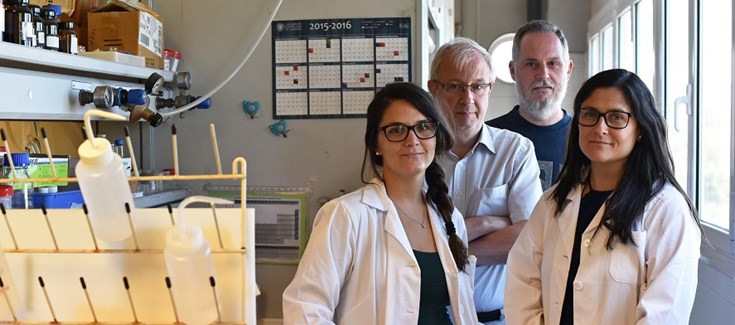XI International Workshop on Sensors and Molecular Recognition: System for detection of senescent cells in vivo
The XI International Workshop on Sensors and Molecular Recognition will take place on 6 and 7 July 2017 at the Polytechnic University of Valencia. Scientists of the unit 26 of NANBIOSIS will present the results of the research carried on together with researchers from the Universitat Politècnica de València, CNIO, CIBER-BBN and the University of Cambridge: an innovative system that allows the detection of senescent cells in vivo and without damaging the tissue.
The main objective of cellular senescence is to prevent the proliferation of damaged cells and, at the same time, to trigger tissue repair. However, when the damage persists, or during aging, the tissue repair process is inefficient and the senescent cells tend to accumulate. This accumulation of senescent cells in the tissues affects the tissue functions and accelerates the aging.
“Elimination of senescent cells has been shown to improve a variety of diseases associated with aging, reverses degenerative processes and extends longevity. Therefore, the strategies to detect and eliminate senescent cells have gained great interest in recent years”, explains Manuel Serrano, principal investigator of the CNIO Tumor Suppression Group.
“Chemically speaking, the sensor is composed of a fluorophore bound to a galactose. Senescent cells have the differential property of breaking galactose bonds very efficiently. When the sensor is internalized in a senescent cell this link is broken and this results in a great increase in the fluorescence of the sensor, which is the signal that we detect excited with a laser. However, when the sensor is internalized in a normal (non-senescent) cell, no signal is observed, ” says Ramón Martínez-Máñez, Scientific Director of Unit 26 of NANBIOSIS, CIBER-BBN and IDM-UPV Institute.
The sensor has properties that make it possible to be excited by absorbing two photons, which causes that the energy of the laser used to visualize the tissues is much smaller than the conventional sensors. In addition, two-photon techniques decrease tissue damage and have greater penetrability.
“The sensor was injected intravenously into animals that had been treated with chemotherapy (which produced cellular damage and senescence), with a very selective signal being observed in regions that responded to chemotherapy (and therefore had many senescent cells) . The animals not treated with chemotherapy did not show any signs”, said Beatriz Lozano, researcher at the Interuniversity Institute for Research on Molecular Recognition and Technological Development (IDM) at the Universitat Politècnica de València
The probe, that has been characterized in unit 26 of NANBIOSIS is potentially applicable to other models of senescence. Different research groups have already begun to test the probe with its biological models.
Article of reference:









